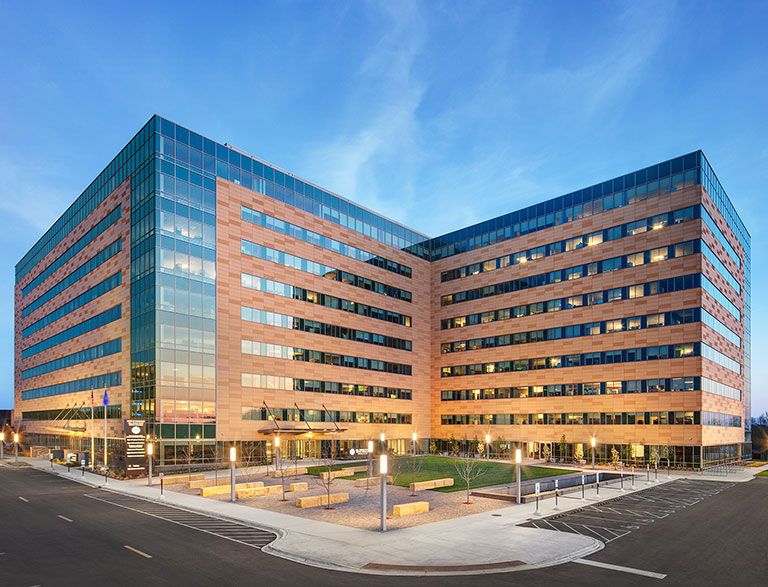Key Takeaways
- Smart technology is revolutionizing commercial real estate by enhancing efficiency, sustainability, and tenant satisfaction.
- Integration of IoT devices and AI-driven systems leads to significant energy savings and operational improvements.
- Adoption of smart building technologies is becoming a competitive advantage in the commercial real estate market.
The Rise of Smart Buildings
The transformation of commercial real estate through smart building technologies marks a pivotal shift in how organizations approach space, efficiency, and tenant engagement. Utilizing advanced sensors, Internet of Things (IoT) devices, and artificial intelligence (AI), these buildings now automate and optimize their operations, creating responsive and intelligent environments. From climate control to lighting, every aspect of the modern commercial space is being elevated for peak performance and comfort. In contrast, features such as commercial audio & video solutions enhance communication and functionality in a digital-first era.
This convergence of technology doesn’t just streamline day-to-day management; it drives significant operational change. Through continuous data collection and real-time analytics, property managers and tenants alike benefit from automated adjustments that reflect immediate building needs. Smart tech integrates into everything from automated security protocols to dynamic energy usage, resulting in cost savings and an overall smarter approach to commercial space management.
Energy Efficiency and Sustainability
One of the most profound benefits of smart technology in commercial properties is the leap forward in energy efficiency and environmental stewardship. AI-driven systems aggregate and analyze inputs from a vast network of sensors, making fine-tuned adjustments to lighting, heating, and cooling systems based on real-time occupancy and usage patterns. According to Forbes, businesses implementing such smart systems can see energy cost reductions by up to 30%, making a meaningful impact not only on their bottom line but also on their environmental footprint.
These upgrades enable commercial spaces to achieve higher sustainability standards and certifications, while also simplifying compliance with evolving energy regulations. As cities and consumers become increasingly conscious of energy conservation, properties equipped with smart infrastructure find themselves ahead of the curve, both in terms of public perception and regulatory readiness.
Alongside these advancements, property managers must address core safety needs. Integrating intelligent solutions for commercial security ensures that sustainability improvements are matched with advanced protection—meeting the intertwined demands of efficiency, safety, and peace of mind.
Enhanced Tenant Experience
Smart building technology also substantially elevates the tenant experience in commercial environments. Automated environmental controls guarantee optimal comfort levels by tailoring light and temperature settings to individual preferences or occupancy patterns. Advanced access and surveillance systems safeguard occupants, while sophisticated audiovisual setups support seamless collaboration—transforming conventional meeting rooms into digital hubs equipped for productivity and creativity.
With the introduction of touchless entry, personalized workspace environments, and digitally managed amenities, tenant expectations are not just met—they’re exceeded. This technological edge makes properties vastly more appealing to prospective tenants, especially as remote and hybrid work models become the norm. In fact, Forbes reports that businesses now prioritize smart-enabled properties as they search for flexible, future-forward workspaces.
Operational Efficiency for Property Managers
For those overseeing commercial real estate, digital transformation through smart technologies represents a game-changer in daily operations. Remote monitoring and management tools provide real-time status updates, allowing for immediate responses to maintenance requests and minimizing disruptions and costly downtime. Predictive analytics further empowers property teams to anticipate equipment failures or energy surges before they become critical issues, reducing emergency repairs and extending the lifespan of building assets.
These improvements foster an ecosystem where property management is not just reactive but consistently proactive—translating into lower operating expenses, reduced manual oversight, and an overall smoother tenant experience. Smart building management systems not only help deliver more reliable environments but also free up valuable staff time for strategic activities, rather than routine troubleshooting.
Market Competitiveness
In today’s competitive commercial real estate market, adopting smart building technologies is quickly becoming essential for property owners and managers. Smart-enabled properties often secure higher occupancy rates and can attract premium rental rates, as modern businesses increasingly demand energy-efficient, sustainable, and flexible work environments. The prestige of operating from a technologically advanced building can also play a significant role in attracting and retaining top tenants.
Additionally, the ability to demonstrate lower operating expenses and a track record of sustainability gives properties a distinct advantage in corporate leasing negotiations and can directly influence property valuations and investment performance.
Challenges and Considerations
Despite the clear advantages, adopting smart technology in commercial spaces does present certain challenges. The initial capital outlay for upgrading infrastructure or retrofitting legacy systems can be considerable, requiring a well-defined business case to justify the expense. Integration processes must be handled with care to avoid disruptions, and thorough planning is needed to ensure compatibility across diverse systems.
Data security and privacy represent ongoing concerns, as increased IoT connectivity and extensive data collection can expose properties to cyber threats. Compliance with data regulations and investment in robust cybersecurity measures are critical steps in the smart technology journey.
Future Outlook
The future for smart commercial spaces looks bright as technologies become more affordable and sophisticated. Trends indicate that adoption rates will accelerate as stakeholders recognize the importance of staying ahead of tenant expectations and market shifts. Ongoing advancements in AI, machine learning, and IoT integration promise even greater levels of customization, automation, and performance optimization, setting the stage for a new era of intelligent, adaptive commercial spaces.
Conclusion
Smart technology is fundamentally reshaping commercial spaces, offering benefits that span energy efficiency, tenant satisfaction, and streamlined management. As these innovations proliferate, property owners and managers who embrace them will set the standard for sustainable, attractive, and highly functional commercial environments—ensuring their buildings stay relevant and successful in a rapidly changing marketplace.







